5 Ways Abstract Art Can Boost Your Mental Health & Well-Being
We talk a lot about mental health these days, yet somehow, the actual care part gets lost in the noise. Productivity gets dressed up as self-care. Mindfulness is turned into a to-do list. And everything from meditation to journalling ends up wrapped in pressure and performance.
But what if healing didn’t have to look like effort? What if it started by simply standing still, in front of a piece of art that asks nothing of you but presence?
That’s the gift of abstract art.
It doesn’t tell you what to think. It doesn’t preach, or prescribe, or push. It simply holds space. Quietly. Steadily. Sometimes fiercely. And more often than not, it shows you something about yourself you didn’t realise needed seeing.
In the whirlwind of modern life, this kind of presence isn’t just valuable, it’s vital.
Here’s why abstract art is more than just visual appeal. It’s a tool for real, tangible, emotional wellbeing. And it belongs in your space not just for how it looks, but for how it makes you feel.
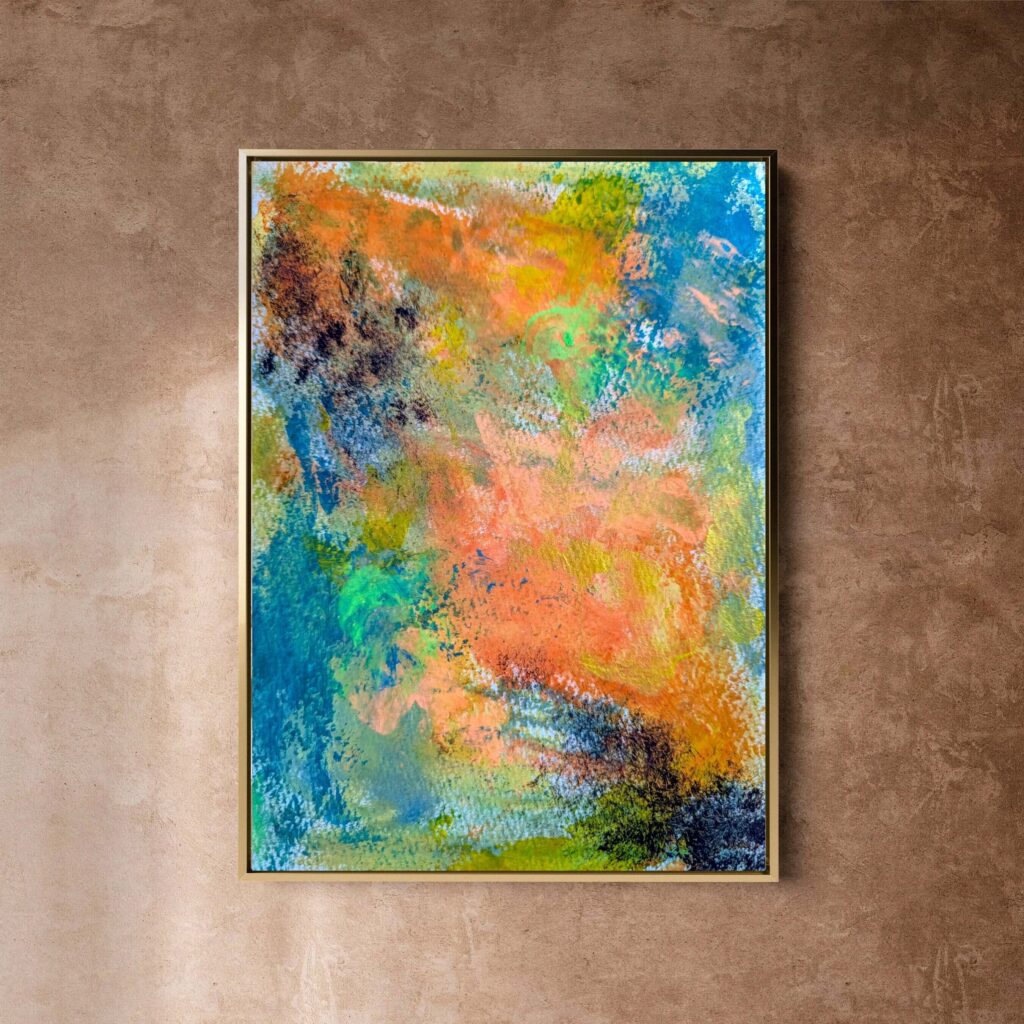
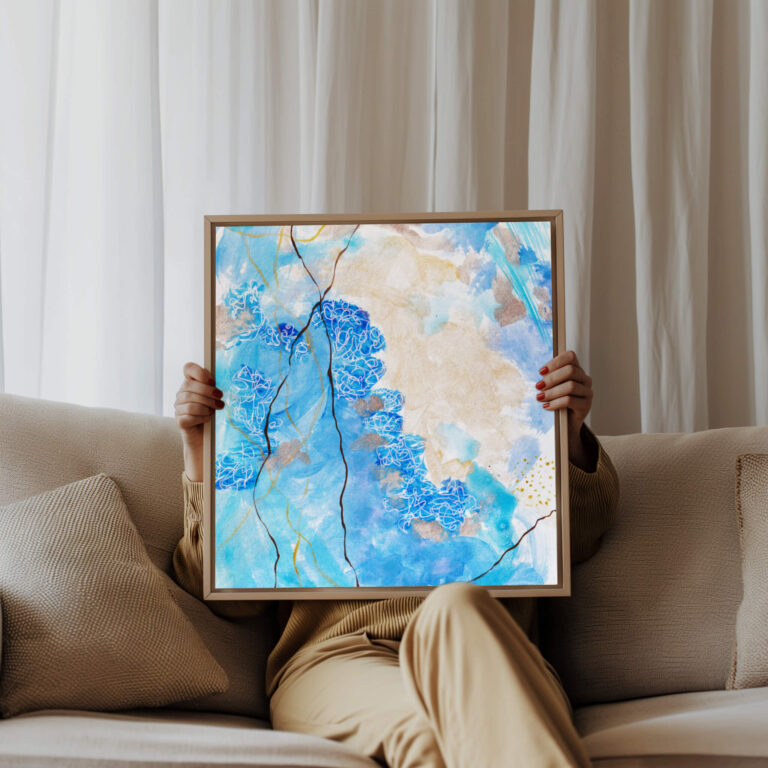
It creates a visual pause in a world that never stops
Mental clutter is a silent epidemic. Notifications, deadlines, headlines, appointments. Even our homes, meant to be our sanctuaries, can become loaded with noise.
Abstract art offers an antidote. It interrupts the chaos. But gently. It doesn’t demand your attention the way most visuals do. It gives you permission to rest your eyes, and your mind, in ambiguity.
There’s no character to analyse. No story to follow. No object to name. Just texture. Tone. Movement. Feeling. In this way, abstract art functions like a visual exhale. You look, and without realising, you slow down. You breathe. You drop back into your body.
This isn’t wishful thinking. Multiple studies in neuroaesthetics show that gazing at non-representational art can reduce cortisol levels, calm the sympathetic nervous system, and encourage parasympathetic (rest and digest) activation. In plain terms, it lowers stress. Not metaphorically. Physiologically.
And unlike guided meditations or breathing apps, abstract art works with zero effort. It meets you where you are and invites you back to stillness, without needing you to try.
It invites emotional expression without explanation
There are moments when we feel everything all at once. And moments when we feel nothing at all. Abstract art speaks to both.
It doesn’t ask you to name your feelings. It doesn’t require language. It simply mirrors what’s inside, often before you’re even aware it’s there.
For people who struggle to verbalise emotions, and let’s be honest, that’s most of us, abstract art offers a safe container. Whether you’re facing burnout, loss, anxiety, numbness, or a quietly brewing sense of unrest, engaging with abstraction allows those emotions to surface. Gently. Safely. Without judgement.
This is why so many therapeutic practices, from art therapy to trauma-informed coaching, incorporate abstract forms. It bypasses logic and goes straight to the heart. You don’t have to know why something moves you. You just have to let it.
The emotional charge of a piece, the movement of the brushwork, the tension between colour fields, all of it invites your body to respond. And that response is healing, even when it’s subtle.
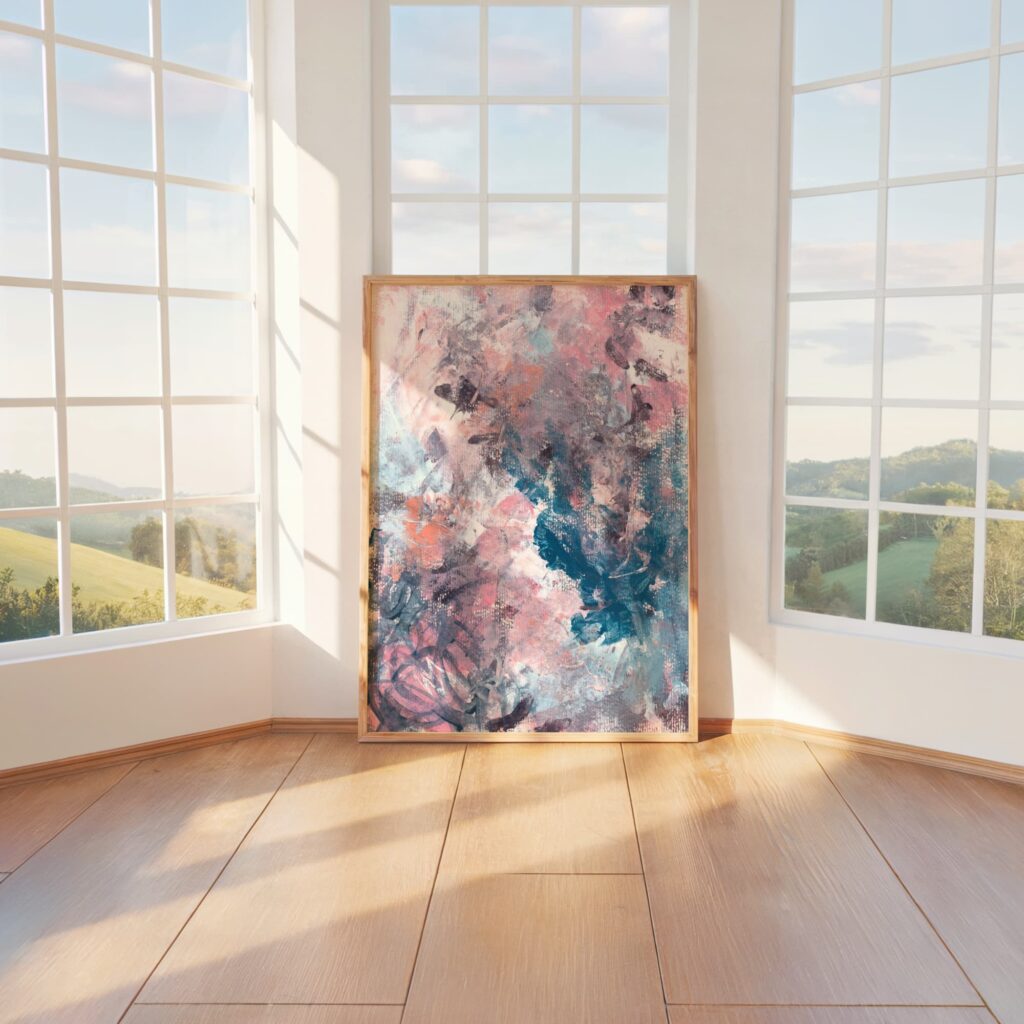
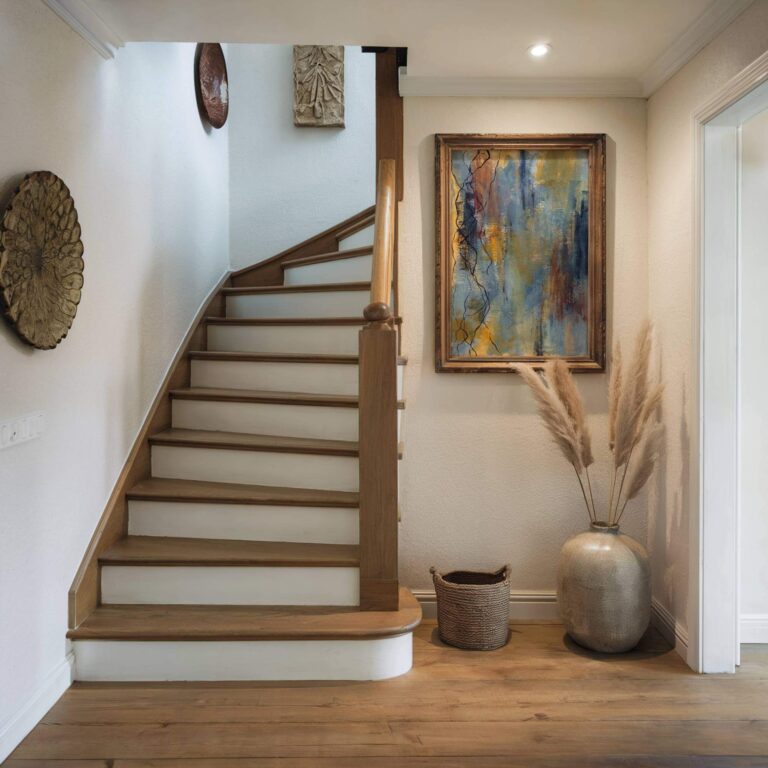
It strengthens your capacity for presence
Most of us live in our heads. Thinking. Planning. Replaying. Forecasting. Rarely do we fully land in the moment we’re in. That’s where abstract art becomes something of a gentle but insistent anchor.
When you stand in front of a powerful abstract piece, your mind quiets. Not because it’s been told to, but because it’s been given something else to do — something that doesn’t involve solving or predicting.
You start noticing the weight of colour. The rhythm of texture. The negative space. The contrast. Without effort, you drop into the now. And that presence, that quiet attentiveness, is one of the most potent mental health tools available.
In a luxury space, where every detail matters, abstract art becomes more than aesthetic. It becomes a mindfulness portal. A living, breathing invitation to slow down. To be. To witness.
And unlike fleeting wellness trends, this practice of visual presence holds. Every time you return to the piece, it meets you afresh. You’re not looking at art. You’re entering into it.
It sparks new ways of thinking, and being
We don’t talk enough about how creativity fuels mental health. Not just making things, but being around things that make us think differently.
Abstract art asks you to release control. To let go of needing answers. To stay open to interpretation. That’s a skill — and one that’s deeply useful in everyday life.
Whether you’re navigating personal growth, complex relationships, or professional challenges, your ability to think beyond the obvious can change everything. Abstract art trains that muscle.
It teaches ambiguity. It celebrates nuance. It rewards curiosity.
This isn’t about being “arty” or eccentric. It’s about nurturing cognitive flexibility, your brain’s ability to adapt, reframe, and imagine. And that kind of adaptability is strongly linked to resilience, emotional regulation, and overall mental wellbeing.
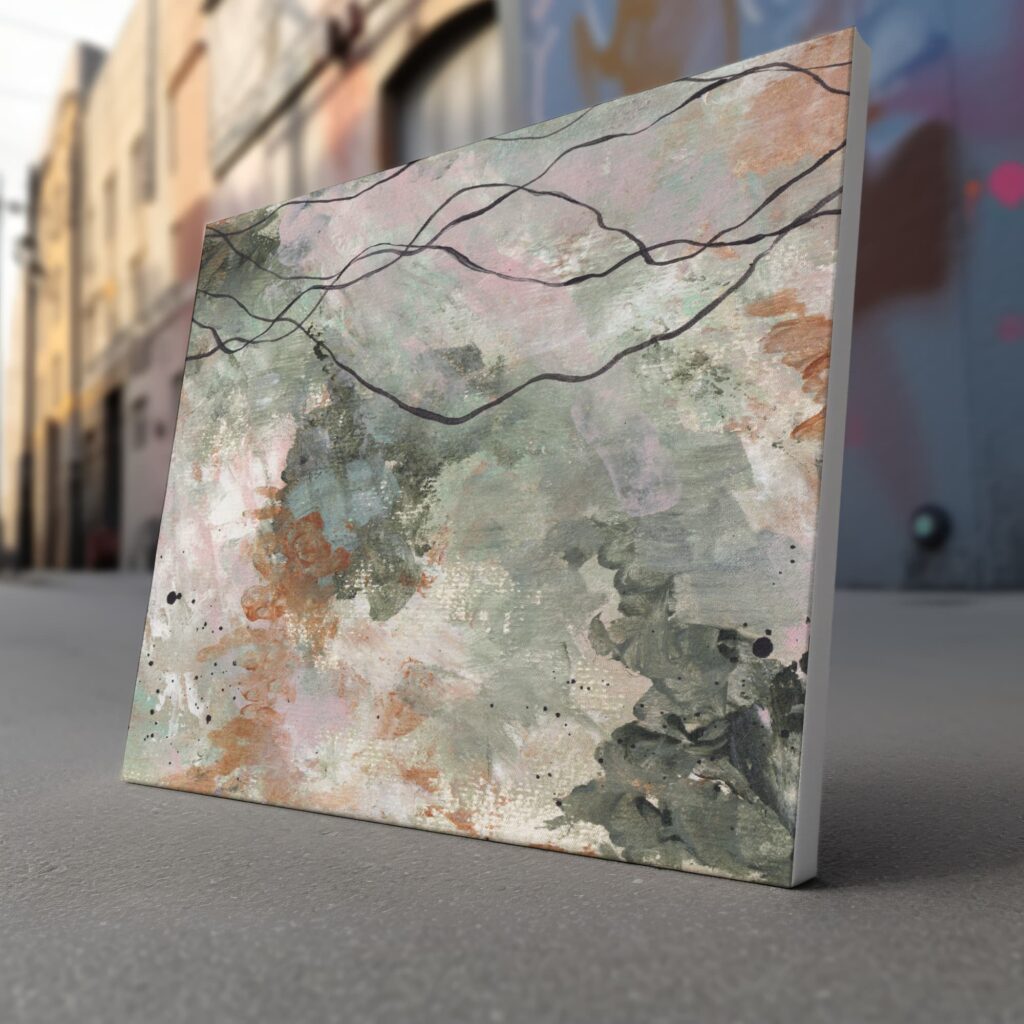
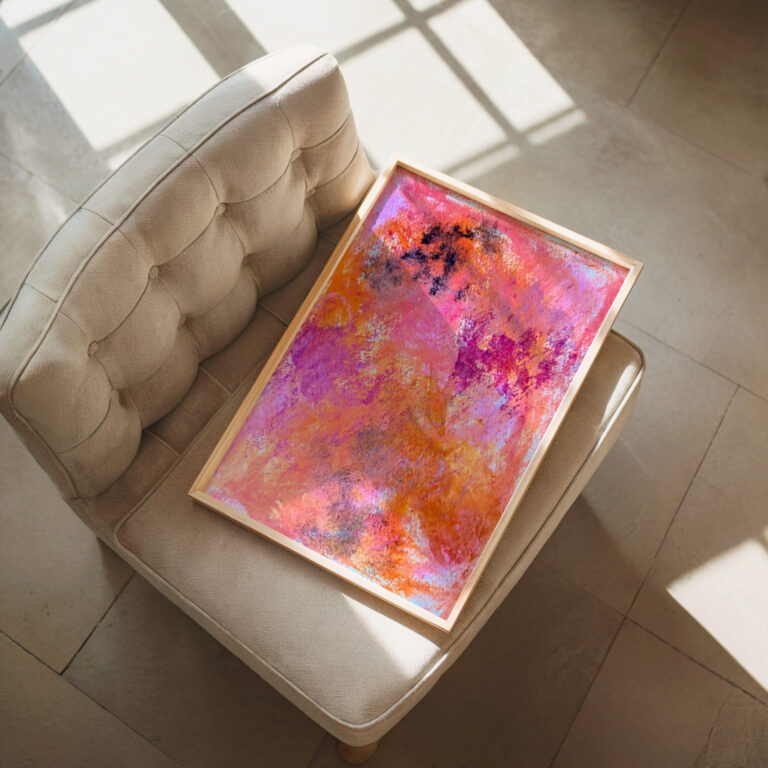
So what does this mean for your life?
It means that art is not a luxury extra. It’s a necessity, especially if you are someone who values presence, depth, and emotional intelligence.
Abstract art doesn’t fix you. It doesn’t promise to cure. But it does hold space for you to come home to yourself. Quietly. Without fuss. Without needing to perform healing.
It helps you soften. Breathe. Notice. And in a world obsessed with more, more speed, more output, more answers, that kind of stillness is radical.
It is also, as it turns out, incredibly good for you.
If you’re ready to explore what this might look like in your own space, you’re welcome to start here, quietly, in your own time: Legacy Thread
It reconnects you with your body
Mental health is not just in the mind. It’s in the body. In the tight shoulders. In the shallow breath. In the tension you can’t explain but always feel.
Abstract art speaks directly to this. Because it bypasses narrative, it doesn’t stay trapped in your head. It lands in the body. A certain texture might settle in your chest. A curve might catch in your throat. A flash of colour might feel like the exact emotion you’ve been trying to suppress.
This somatic connection is powerful. It’s what allows abstract art to do more than soothe, it helps you release. To feel something. Move something. Let something go.
And unlike most “body-based” practices, it doesn’t ask you to stretch or breathe or lie down. It just asks you to look. To feel. And that can be enough.
It cultivates your inner world, not just your outer one
We live in a world obsessed with the external. Interiors get styled for Instagram. Lives get curated for applause. And somewhere along the line, the private self gets pushed aside.
Abstract art reclaims that inner space. It doesn’t exist to be shown off or explained. It’s not about what others see. It’s about what you feel.
The most profound pieces are often the ones no one else understands. And that’s the point. You didn’t choose them for them. You chose them for you.
When you bring that kind of art into your space, the kind that reflects your emotional landscape, not your aesthetic, it changes things. It signals that your inner world matters. That your emotional reality deserves room to breathe.
In a culture that constantly asks you to perform, that quiet act of self-honouring is deeply healing.
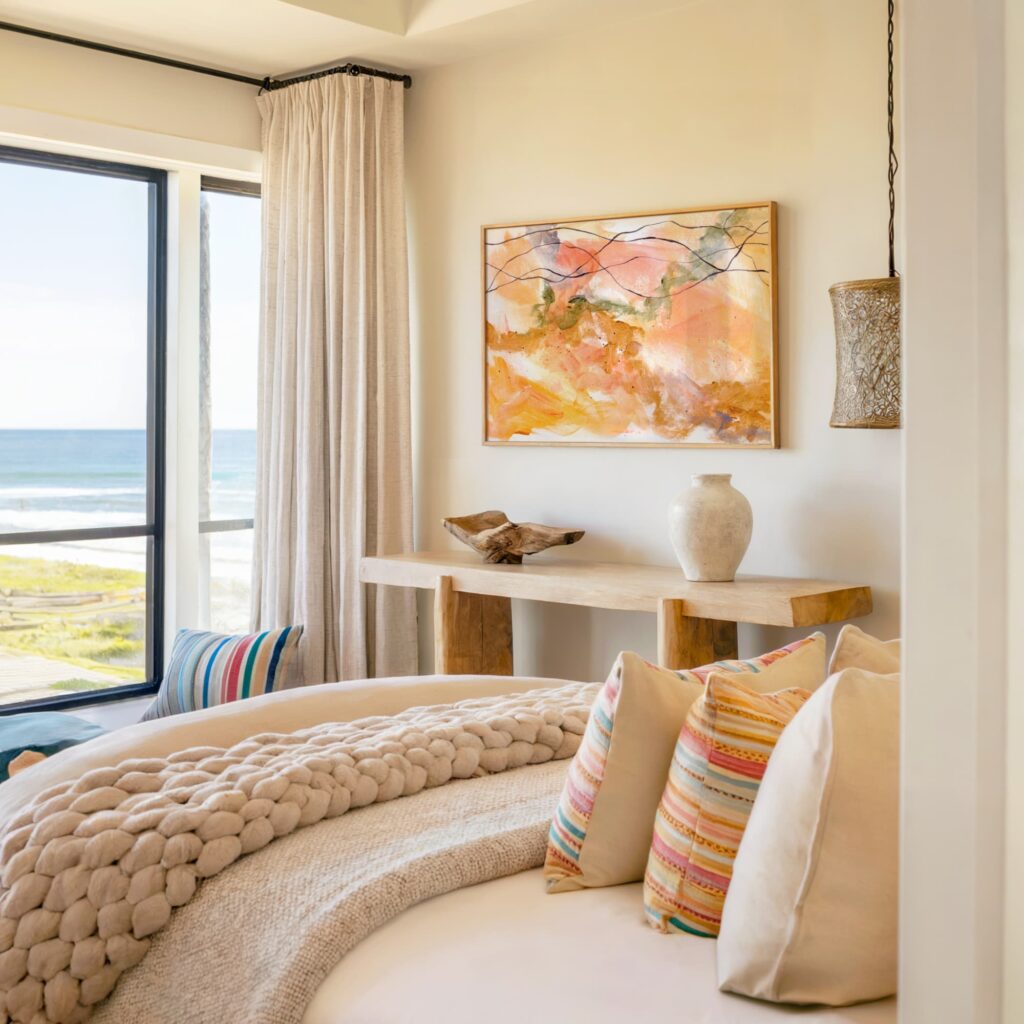
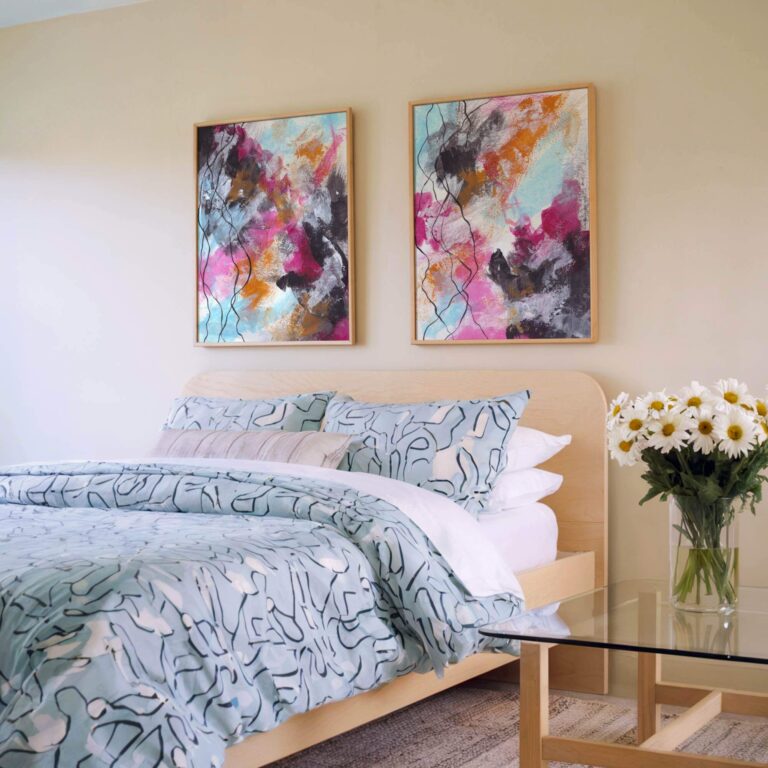
It becomes part of your recovery ritual
Whether you’re navigating grief, burnout, depression, or quiet disconnection, healing doesn’t always come in big breakthroughs. Often, it arrives in small, consistent moments of care.
Abstract art can become part of that rhythm. A visual touchstone. A daily reminder that beauty still exists. That you still feel. That your inner world still has room to expand.
Some people keep a favourite piece by the front door. Others place it across from their bed. Some light a candle before sitting with it. These small, intimate rituals matter. They mark time differently. They turn survival into sacredness.
In that way, the art doesn’t just hang on your wall. It becomes part of your recovery. A visual companion in your healing process.
It makes stillness feel safe again
For many people, especially high achievers, trauma survivors, or those living in constant motion, stillness doesn’t feel relaxing. It feels threatening. Unfamiliar. Vulnerable.
Abstract art helps rewrite that relationship.
Because it gives your eyes something to engage with, it creates a bridge. You’re still being present. But you’re not doing nothing. You’re looking. Feeling. Being. That’s a very different kind of stillness. One that feels anchored rather than exposed.
Over time, this changes how you experience quiet. It no longer feels like absence or punishment. It starts to feel like nourishment.
And once you begin to experience stillness as a resource, everything in your life softens, your nervous system, your relationships, your sleep, your creative thinking. Stillness becomes a strength, not a liability.
My Offerings
Whether you’re a private collector, a wellness-focused brand, or a designer sourcing for a high-calibre project, I offer art that resonates deeply and subtly.
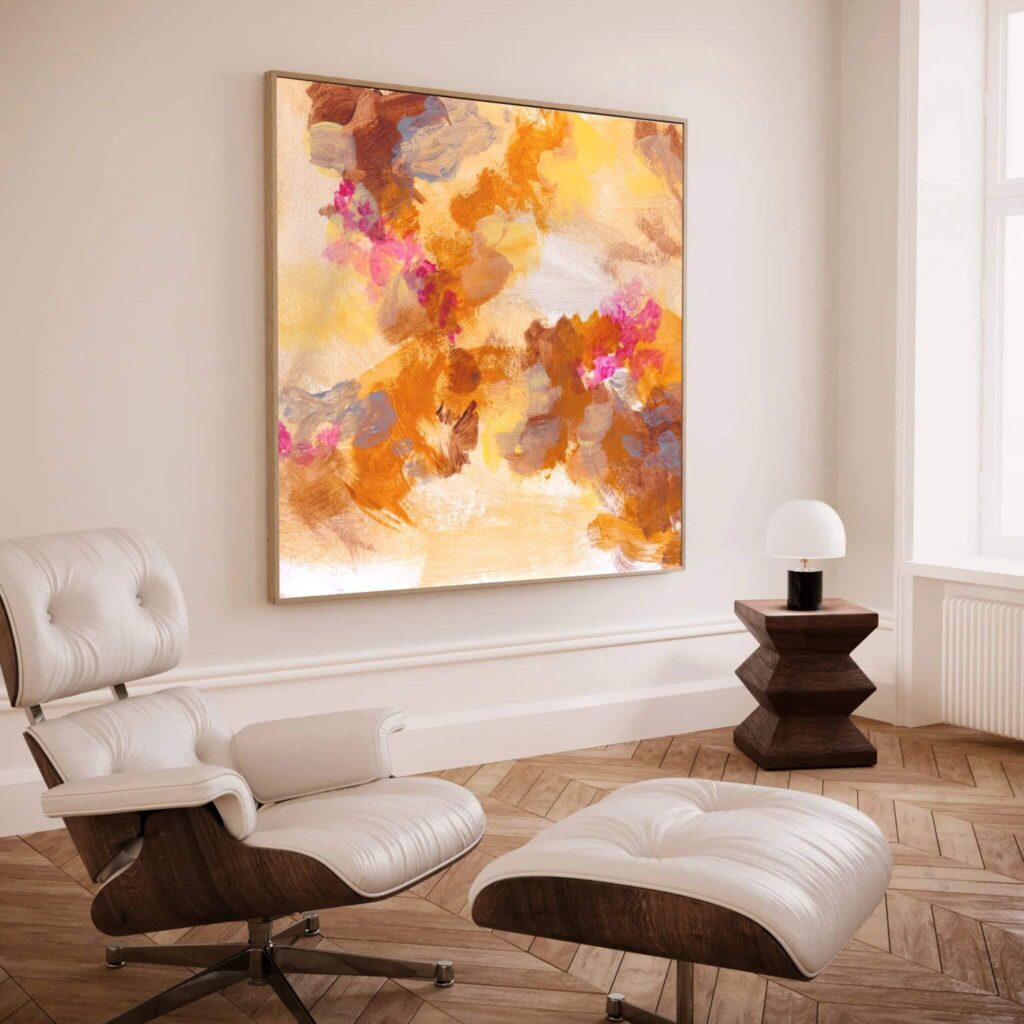
Collector's Vault
Curated canvas prints created from my original works—each one designed with emotional resonance and sustainable materials. Ideal for those creating meaningful spaces across the UK.
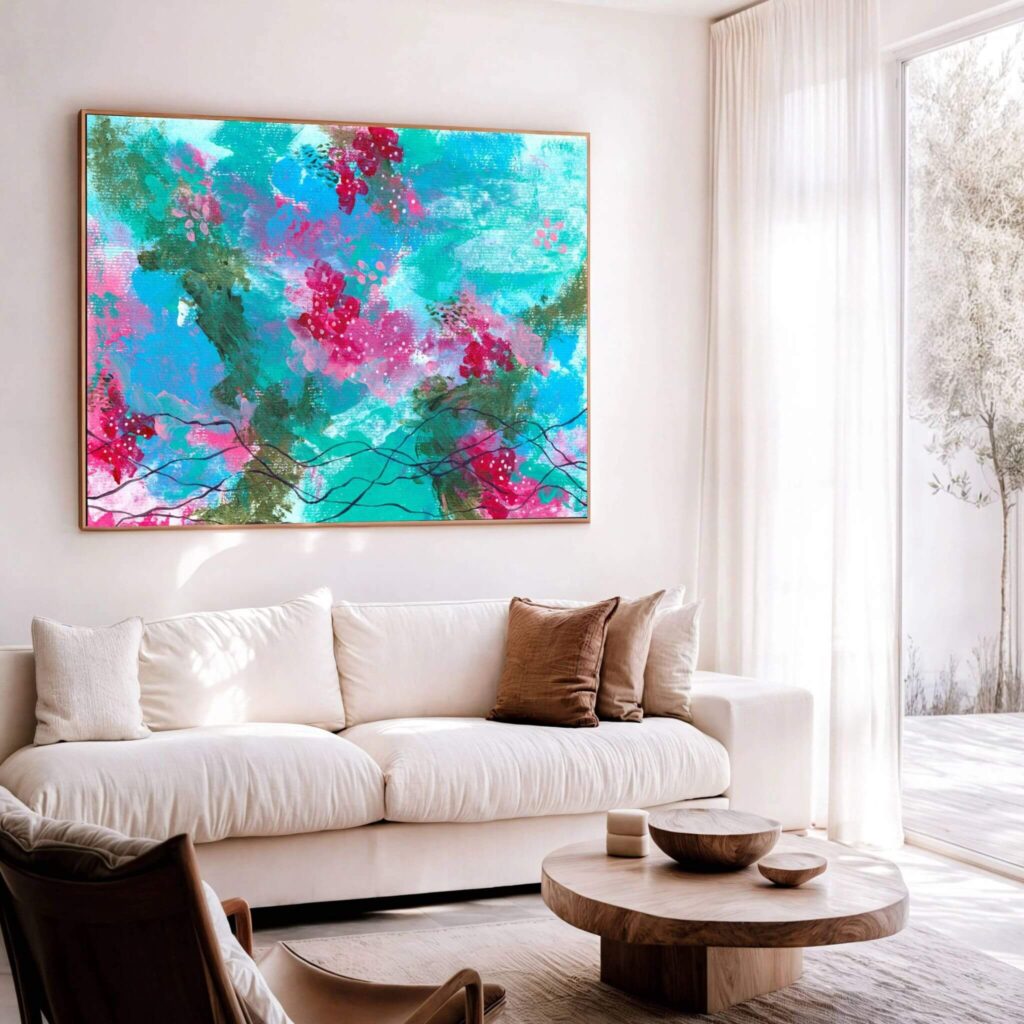
Soul on Canvas
Private commissions created from your story, your chapter, or your emotional intent. Made by hand. Printed once. Made to hold space for years to come.
The Last 10
Ultra-limited hand-embellished canvas works. Quietly released. Made to elevate, ground, or quietly command.
Mental health is not just clinical. It’s cultural. Emotional. Spatial.
We often treat mental wellbeing as something to manage with medication, therapy, or self-help books — and those are all valid. But what if the space you live in, the art you look at, and the feelings you allow also play a central role?
Abstract art isn’t a magic solution. But it is a gateway. To emotion. To presence. To healing. And when chosen intentionally, it becomes more than décor. It becomes part of your ecosystem of care.
You don’t need to understand abstract art to feel its impact. You don’t need to explain it to benefit. You just need to let it in. To stand in front of it. To feel what you feel. And let that be enough.
If you’re creating a space that nurtures your emotional health, not just your productivity or appearance, let your art be part of that. Let it meet you where you are.
And if you’re not sure where to begin, you’re welcome to explore here: Legacy Thread
The pieces don’t shout. They don’t sell. They wait. Just like healing does.
